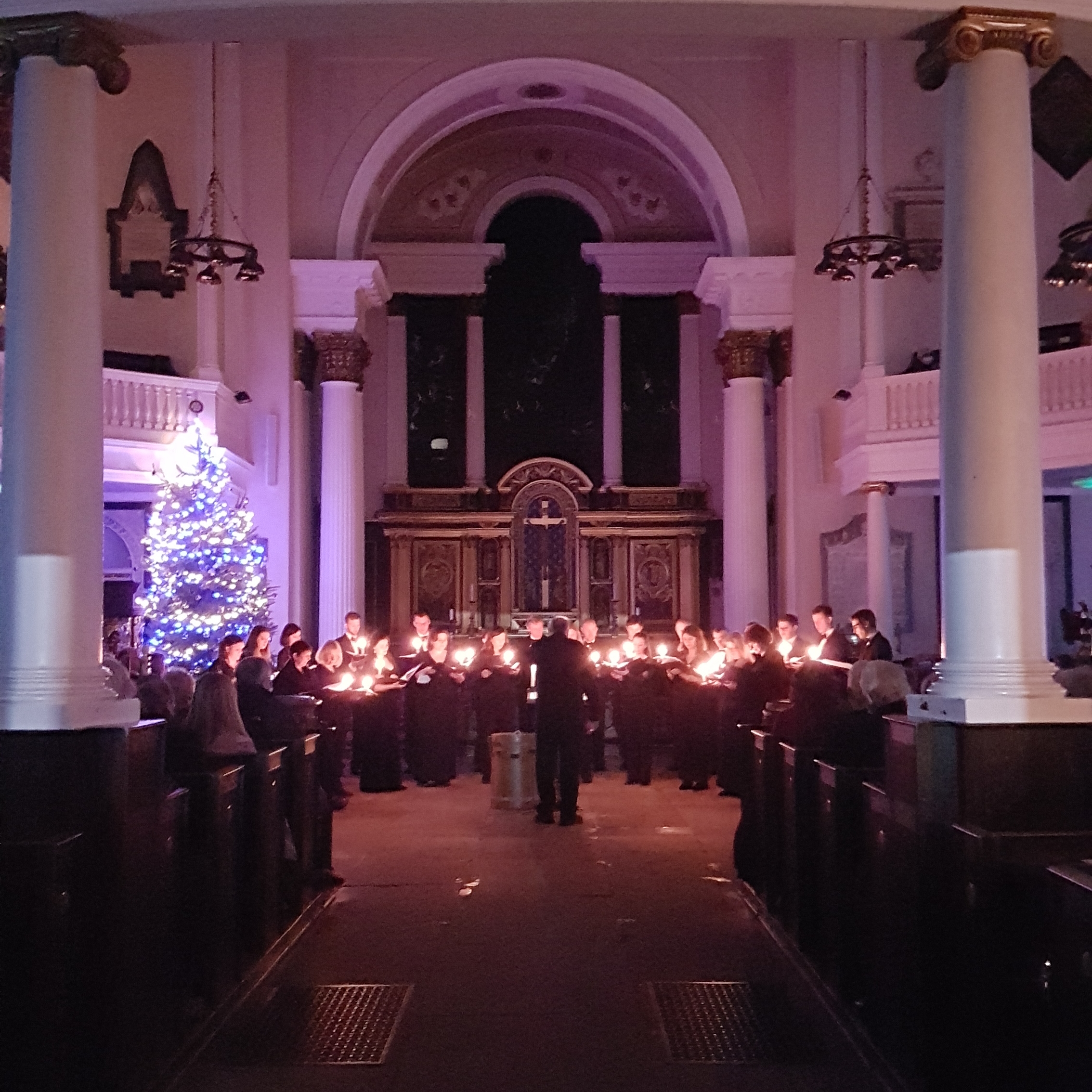Neil Thomas speaks to Bridgnorth CC chairman Guy Black about exciting times at the go-ahead club, as well as wider challenges facing the sport.
It is an archetypal English scene – a sunbathed village green in August, men in white, the gentle clip of willow on leather, cries of ‘good shot’ and ‘howzat?’, the camaraderie, the afternoon tea.
If it is a scenario more reflective of the 19th or 20th centuries – players today are male and female, in all colours and the ‘gentle clip’ is more likely to be a ‘furious thwack’ – it nevertheless underlines something fundamental.
Cricket is here to stay.
It is by tradition our national summer sport, supplanting football from May to August. On Saturdays and Sundays – and often midweek too – through the months of Spring and Summer, matches are played across the land.
At amateur level – where it is as much a social occasion as sporting event – players of all ages and abilities take part and rivalries are often keen, though generally within the cricketing code of courtesy and sportsmanship.
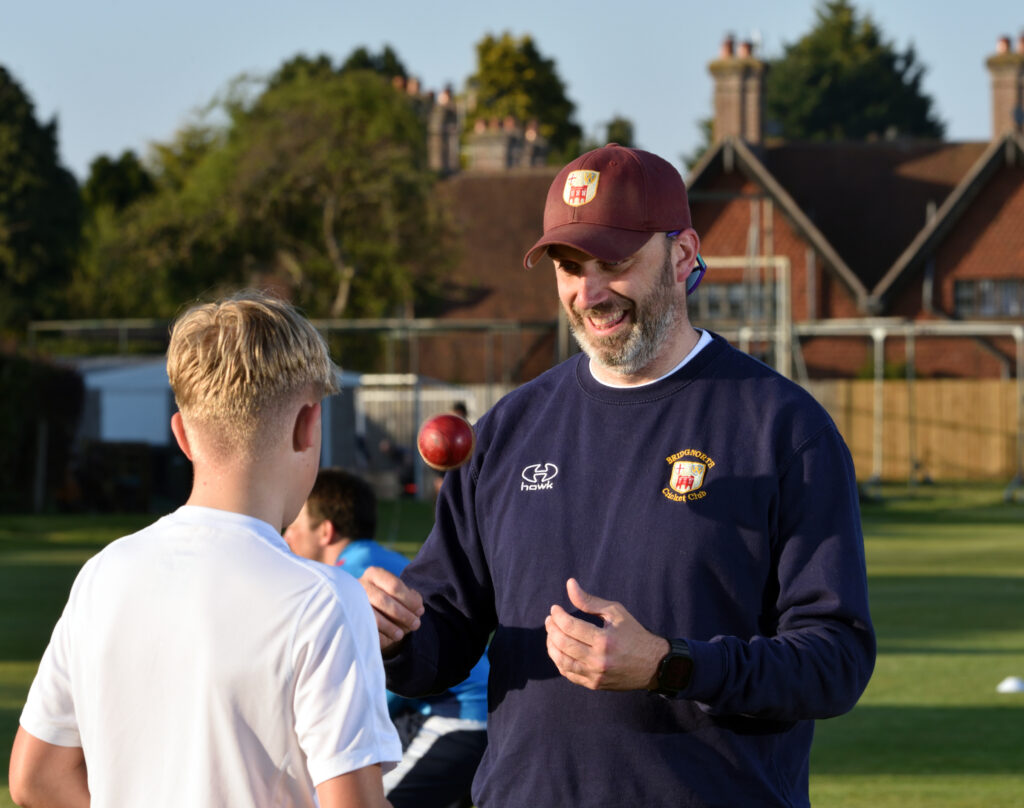
It is a game steeped in custom and history. And nowhere in Britain has that history been better upheld than in Bridgnorth, where they have been playing cricket for nearly 200 years.
Bridgnorth Cricket Club itself has a proud history, having been founded in 1839. The club was first recorded in Bell’s Life in London and Sporting Chronicle, the leading national sports journal of the time! During the mid-19th century, Bridgnorth was regarded as one of the three most important cricket clubs in Shropshire, alongside Shrewsbury and Eyton.
More on the history later. Fast forward to the present and 2025 marks a fresh chapter in the long Bridgnorth story. The club’s first team is competing this season in the Shropshire Premier League for the first time in more than two decades. It follows relegation from the elite Birmingham League after 22 memorable seasons, in which the club punched well above its weight against some of the strongest and best-resourced amateur sides in the country.
While demotion is disappointing, Club Chairman Guy Black remains optimistic. “Relegation from the Birmingham League was, of course, disappointing for everyone involved with the club. After two decades of competing at that level, it’s a tough pill to swallow but we have to view this as an opportunity rather than a setback.
“Our focus now is on rebuilding and coming back stronger. Moving into the Shropshire League gives us a chance to reset, develop our squad and create an environment where players can enjoy their cricket while maintaining high standards.
“We’ve got a talented group of players, a thriving junior section and a passionate committee and membership. The challenge now is to use this as a stepping stone for future success – and we’re fully committed to doing just that,” Guy says.
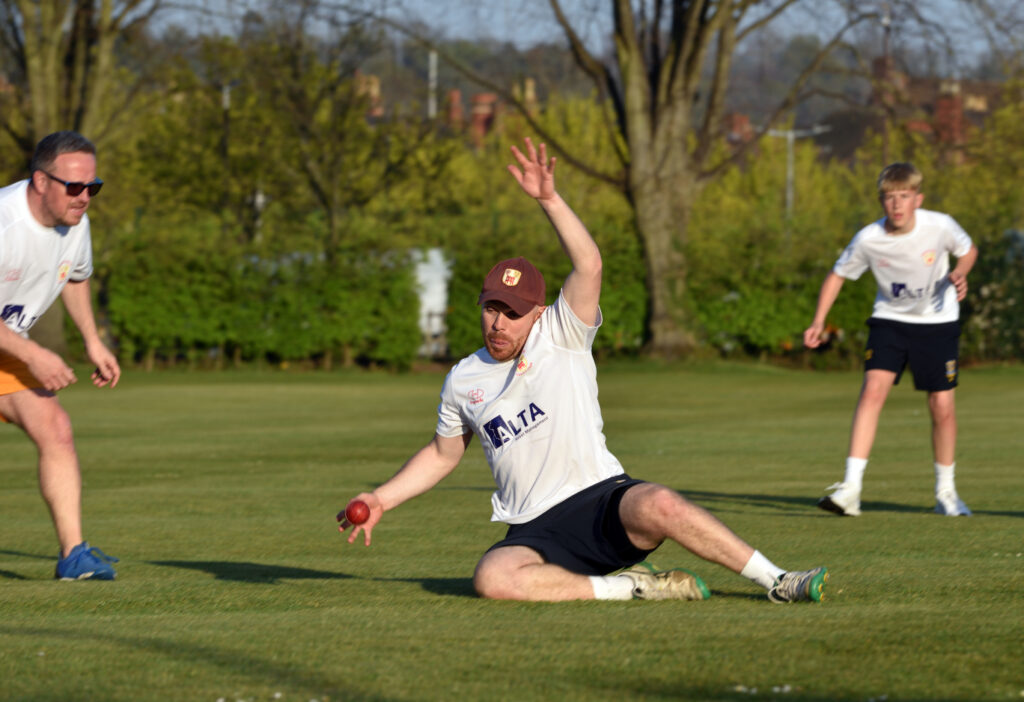
“Moving back into the Shropshire League means we are facing a fresh set of challenges and there is excitement about playing against teams we haven’t met in league cricket for a long time. Many of our players and members have long-standing connections with clubs in the county, so there’s a familiarity that adds to the enjoyment. There’s also an element of reacquainting with old adversaries which brings a bit of extra spice to the competition.
“More importantly, this move allows us to refocus on building momentum, developing our squad and ensuring we’re competing at the right level. We’re determined to make our mark and push for success in this new chapter for the club.”
The club is fielding eight teams in competitive competition this season, reflecting a healthy appetite for the game in the town and surrounding areas. The senior set-up sees two teams playing on Saturdays, one on Sundays and a midweek adult team.
Alongside this, the club has a strong junior section, with multiple teams competing in midweek leagues.
“The growth of our junior setup has been a real success and we’re seeing more junior players progressing into senior cricket, which is fantastic for the future of the club.
“If you come on a Friday evening, you’ll see more than 150 young people at our juniors’ training and coaching sessions. Sometimes you can barely see a blade of grass for all the youngsters on the field,” he says with a broad smile.
It is perhaps no surprise given the level of expert coaching available at the club.
“We have an excellent coaching setup at Bridgnorth, not just for our thriving junior section but also for our adult players. It’s something I’m incredibly proud of,” Guy says.
It is led by Peter Scott, a Level 4 accredited coach with the ECB (England and Wales Cricket Board) – the highest coaching qualification in the game.
“He brings a wealth of experience and expertise, ensuring our players receive top-level coaching.”
Peter is supported by a dedicated team of eight ECB Level 2 coaches, providing structured and high-quality guidance for players across all age groups and abilities.

“Our junior section is producing players who are now progressing into senior cricket, which is testament to the strength of our coaching pathway. We place a strong emphasis on player development, from grassroots all the way to our first team. We’re committed to maintaining a high standard of coaching to help every player reach their potential,” Guy adds.
Bridgnorth is committed to promoting equality, diversity and inclusions across all levels of the club, he emphasises. “Cricket should be a sport for everyone and we work hard to create an environment where players of all backgrounds, abilities and genders feel welcome and have opportunities to develop and enjoy the game.”
The club has a broad age range of players, reflecting not only the strong junior section but the longevity of active involvement that club cricket offers. Players continue to compete long after their playing days are over in more physically-intense sports like football and rugby.
“At the youngest end we have a strong group of Under-13/14s who are progressing through the ranks, some of whom are starting to make their first appearances in adult cricket. At the other end of the spectrum, we have a few experienced players competing well into their 50s, bringing invaluable knowledge and leadership to the club and helping the youngsters integrate into the senior teams.”
Guy himself proves the point as a 57-year-old all-rounder (one who bats and bowls) and 3rd XI regular. “I still love to play and plan to do so as long as health and fitness allows,” he adds with a smile.
“Overall, the club’s demographic leans towards the younger generation. They bring a youthful energy which, combined with the experience of our senior players, creates a great balance.”
The club is so well run that it has developed a wide appeal amongst cricketers over the years.
“Of course, we primarily attract players from Bridgnorth and surrounding villages. However, given the high standard of cricket we play, we have also drawn players from further afield, including Birmingham, Walsall and other parts of the West Midlands,” Guy explains.
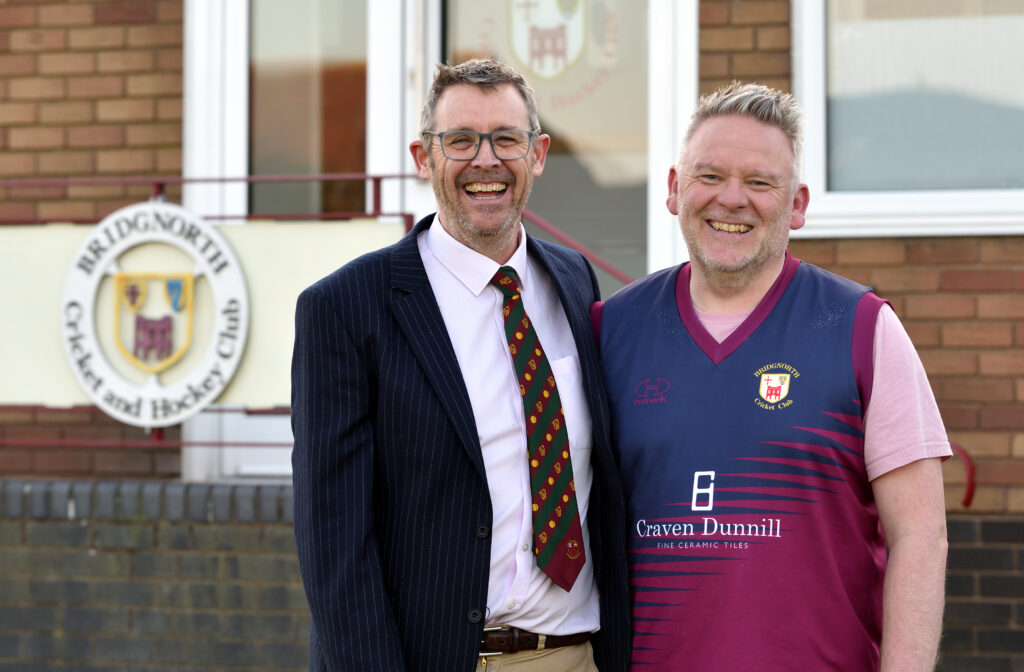
“Our reputation for strong competition, excellent facilities and a welcoming environment means that players are willing to travel to be part of the club. We are proud to offer opportunities for both local talent and those from further afield who are looking to test themselves at a competitive level.”
Today’s slick set-up, with competitive leagues and no shortage of opposition to play against, is a stark contrast to the club’s early years in the first half of the 19th century.
Early matches were played on Bridgnorth Racecourse, with the first recorded fixture of the newly formed club in 1839 seeing the Bachelors defeat the Marrieds by 16 runs.
In July 1840 Bridgnorth played the county’s strongest side, Eyton CC, on the lawns of Eyton Hall with a return fixture in September. The Eyton Club won both games convincingly.
While today’s players can travel 40 or 50 miles by car for matches, far fewer fixtures were played in the early years simply because away games had to be within horse-drawn or walking distance. Some away trips were even made by boat before the advent of popular rail travel in the 1860s provided the opportunity for more matches.
The club played home matches at several locations before moving to its present ground, Cricket Meadow off Victoria Road, in 1887, where it had a small clubhouse. This was replaced in 1926 and enlarged in 1954.
It was then rebuilt in 1975 after amalgamation with Bridgnorth Hockey Club. This milestone marriage half a century ago did much to secure the future of both clubs, who are proud to be known as Bridgnorth Cricket and Hockey Club.
Bridgnorth first played league cricket briefly in 1959-60 in an embryo Shropshire League, but soon left, reverting to playing most of its fixtures against clubs in the West Midlands conurbation – a matter of geography as much as culture – which it had done since the end of the First World War.
In 1972 Bridgnorth joined a revamped Shropshire League, winning it for the first and only time in 2002 to become part of the new Birmingham and District Premier League, playing in its second division. The club had an association with the original Birmingham League founded in 1888, and had fixtures with many of its constituent clubs. From 1964 to 1971 Bridgnorth played by invitation in the Birmingham League knockout competition, reaching the final in 1968.
Bridgnorth has played Sunday league cricket since 1988, again in leagues based in the West Midlands, and now plays in the Shropshire Sunday League.
Some Bridgnorth players have progressed to careers in first-class cricket. Some have spent time on the staff of first-class counties and a number have played minor counties cricket for Shropshire.

Two legends stand out.
Cyril Washbrook played 37 Test matches for England from 1937 to 1956. He formed a formidable opening batting partnership with Len Hutton, which averaged 60. Their first wicket stand of 359 against South Africa in Johannesburg in 1948 remains a record for England. In 1956 as a selector, he was persuaded out of retirement at the age for 41 to score 98 in the Third Test against Australia at Leeds, helping England to level the series, which they went on to win and claim the Ashes.
Washbrook, though, first caught the eye as a schoolboy in Bridgnorth. The family had moved to the town from north Lancashire when Cyril was 12. By the time he was 16 he was scoring centuries aplenty for Bridgnorth Grammar School and Bridgnorth Cricket Club. Indeed, the Bridgnorth secretary tipped off first class county Lancashire about the prodigious teenager whom no bowler could get out in May 1931. By 1933 he duly signed for the county of his birth and the rest is glorious history.
On his arrival at Old Trafford, Washbrook apparently had a brief conversation with the county’s bowling coach SF Barnes. Five years later, Sydney Barnes would become arguably the greatest player to represent Bridgnorth – indeed he is widely regarded as one of the greatest players in the game’s history.
The Smethwick-born pace bowler and leg spinner played 27 matches for England from 1901 to 1914, taking 189 wickets at 16.43 (runs conceded per wicket), one of the lowest Test averages ever. In 1911–12, he helped England to win the Ashes when he took 34 wickets in the series against Australia. In 1913–14, aged 41, he took a world record 49 wickets in a Test series, against South Africa. The First World War came and he never played for England again.
He briefly played First Class cricket for Warwickshire and Lancashire in the County Championship, played many times for his native Staffordshire in the Minor Counties League and played league cricket in Yorkshire.
For one memorable season, though, this cricketing icon played for Bridgnorth – his final season as a professional at the age of 65.
He underlined his talent – not to mention his legendary physical fitness – by topping both the bowling and batting averages for the club, taking 126 wickets at 6.94, and scoring 314 runs (at an average of 28.55 for every innings).
He continued to play cricket as an amateur after leaving Bridgnorth. His last match was for Stone, in the wartime Staffordshire League, in 1940 – aged 67.
As ever, it is difficult to place all this in a modern context save, perhaps, to surmise that it’s as though crowds were rocking up at Cricket Meadow every other week to cheer on a Bridgnorth team containing Jimmy Anderson.
For all that there are role models like Anderson, Joe Root, Ben Stokes et al, cricket doesn’t appeal to children and teenagers in the way it once did.
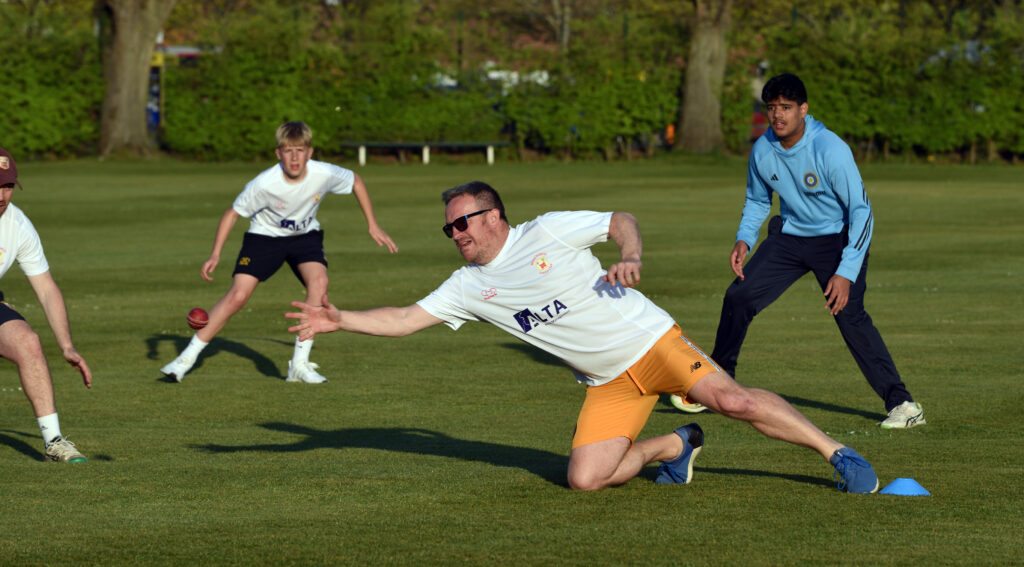
“In today’s world children have more options than ever when it comes to sports and leisure activities. The traditional longer cricket formats like Test matches and championship games struggle to capture their attention,” Guy contends. “Many of those who are attracted to cricket prefer the fast-paced excitement of T20 and shorter formats. The rise of The Hundred and franchise T20 leagues around the world has influenced the way young players see the game. They want high energy action, big hitting and quick results rather than the patience and endurance required for five-day Test matches. In a way it is reflective of modern life as a whole – the shorter attention span, the desire for a quick result, a decisive outcome, and move on.
“We need to embrace these preferences to ensure that junior cricket remains engaging. We want to develop an environment where kids not only learn the game but develop a love for it.”
Another challenge is that fewer state schools offer cricket than did 30 or 40 years ago, closing off what was once the main introduction to the game for children. Guy believes clubs like Bridgnorth have a crucial role to play in filling the gap.
“Clubs are often the only way that children have access to the game now. Our junior section is thriving because we actively engage with local schools, encouraging participation. As clubs we also have a responsibility to promote the values of the game – teamwork, discipline and respect. If grassroots clubs don’t step up, there’s a real risk of cricket becoming less accessible to future generations, particularly in communities where state school sport is limited.”
Guy believes that attracting and keeping players in general – seniors as well as juniors – is one of the major challenges facing amateur cricket in the 21st century.
“With work commitments, travel and family life taking precedence, it’s becoming harder to maintain strong participation in league cricket. Clubs need to adapt, offering flexible playing opportunities and formats that suit modern lifestyles.”
Financial stability is another major factor, the chairman says. “Running a cricket club requires significant resources, from maintaining facilities to funding coaching programmes and equipment. We’re fortunate to have great support from sponsors and volunteers but, like many clubs, we have to be proactive in seeking funding, grants and new revenue streams to secure our future.”
One of the great appeals of cricket is its tradition as a sociable sport.

“The social side of cricket is incredibly important,” Guy says. “A strong club isn’t just about what happens on the field – it’s also about the sense of community and camaraderie that comes with it. Bonding with teammates off the pitch strengthens team spirit, making the club a more enjoyable and welcoming place for everyone. Socialising with your opponents after the game is also very important.”
The traditional tea – either between innings or after the match – was a fundamental part of this. Guy aims to reintroduce the custom, after it fell away because of social distancing rules during the Covid pandemic.
“During matches I was sitting in my car eating my sandwiches alone. It was then I realised just what a big part of cricket the tea interval is.”
He believes cricket clubs are places for all the family, whether members play or not. “At Bridgnorth, we place a big emphasis on inclusivity and making sure that partners and families feel just as much a part of the club as the players. Many of our social events, whether it’s live music, quiz nights or bingo evenings, are designed to bring everyone together, creating a family-friendly atmosphere.”
Guy adds: “Cricket clubs thrive when they are at the heart of their local community and we’re proud that Bridgnorth CC is more than just a place to play cricket. It’s a place where friendships are built and families can enjoy being part of something special.”
Interested in joining Bridgnorth Cricket Club?
For more details visit bridgnorthcricketclub.co.uk





